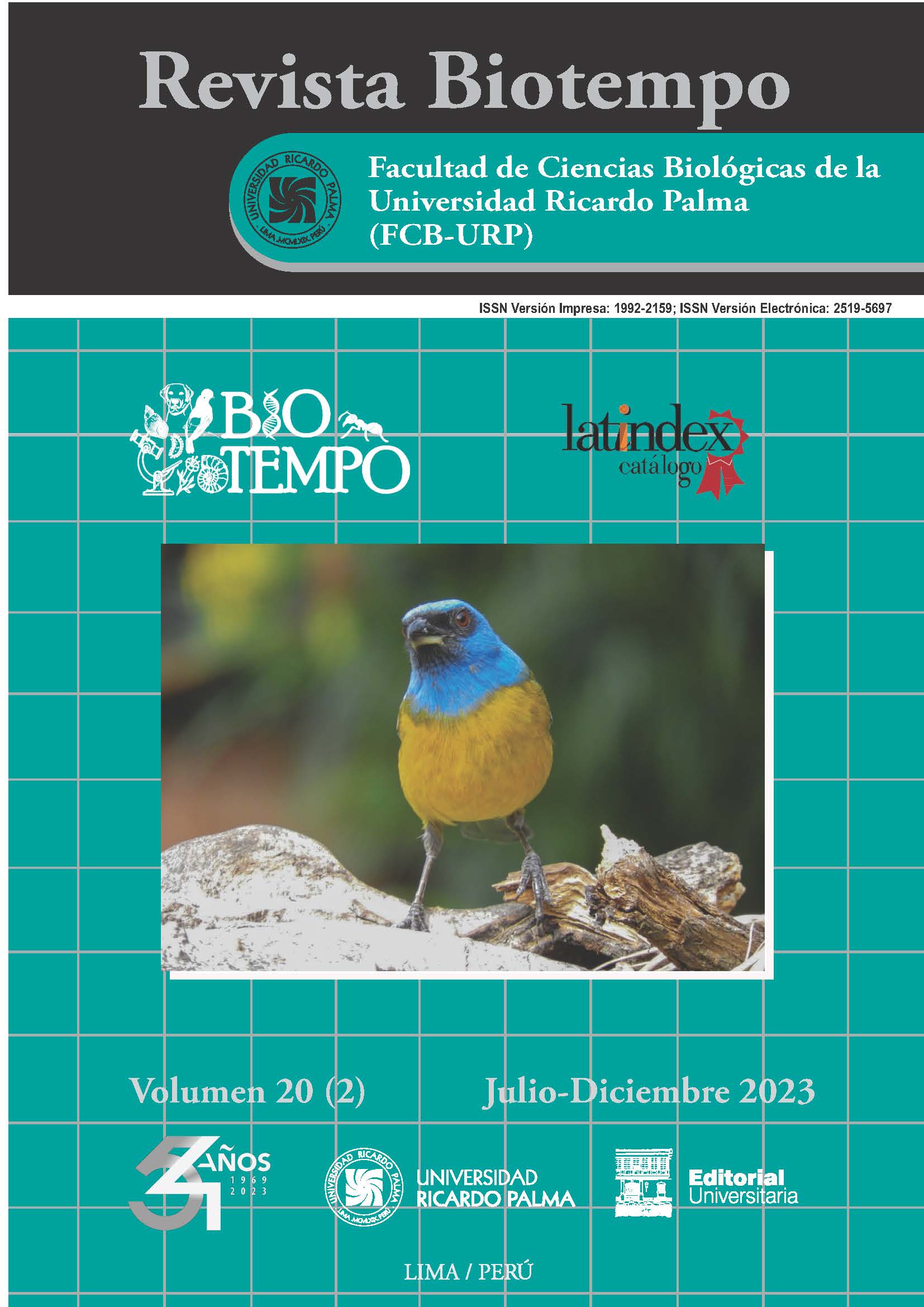Reproductive behavior of Wren-like Rushbird Phleocryptes melanops (Vieillot, 1817) and Many-colored Rush tyrant Tachuris rubrigastra (Vieillot, 1817) (Passeriformes) and their relationship with the vegetation in Pantanos de Villa- Perú
DOI:
https://doi.org/10.31381/biotempo.v20i2.6225Keywords:
birds, nesting, Phleocryptes melanops, Tachuris rubrigastraAbstract
Birds are an important group in the fauna of the wetland of the Pantanos de Villa Wildlife Refuge, Lima, Peru. Th e Passeriformes that are specialists in this wetland, such as Wren-like rushbird [Phleocryptes melanops (Vieillot, 1817)] and the Many-colored rush tyrant [Tachuris rubrigastra (Vieillot, 1817)], make their nests in the wetland vegetation. Th erefore, its reproduction and its relationship with vegetation were studied in this research. Nests of both species were searched between May to October 2022 in the Génesis lagoon, and in the Mayor Lagoon. A description of the reproductive behavior in incubation, chicks, and reproductive success, etc. was made. In the vegetation, data were taken such as the height of the vegetation, the vegetation cover, the measurements of the nest, height of the nest, number of leaves that support the nest, among others. While, for parental behavior, with the help of a camera trap around a nest, the number of times that the parents went to the nest was evaluated. 50 nests were detected for the period May – October 2022, 33 of P. melanops and 17 of T. rubrigastra. For the “junquero” between 2-3 eggs were found in the nests and their hatching success was 90.38%, the fledglings had a reproductive success of 93.6%, and the approximate dimensions of the nests have an average of 9.50 ± 3.48 cm. For the “seven colors” between 2-3 eggs were found in the nests and their hatching success was 86.36%, the fledglings had a reproductive success of 78.95%, and the approximate dimensions of the nests have an average 14.2 ± 4.71 cm. Regarding the relationship between nests and vegetation, no significant associations were obtained for T. rubrigastra; while, for P. melanops there is only a negative correlation for the distance from the nest base to the water or height of the nest, and for the size of the nests (height x width), with the smaller nests being those that would be higher. height. In the case of the reproductive behavior of P. melanops, there is a record of an introduced rodent that preyed on the nest, and in the case of T. rubrigastra, both parents carry out parental care with various activities near the nest.










